
Nagula Chavithi is an auspicious day to worship the Nagas. Married women keep a fast and pray for the protection and well-being of their children. It is a major festival in Andhra Pradesh, Tamil Nadu and Karnataka states in India.
What is Nagula Chavithi?
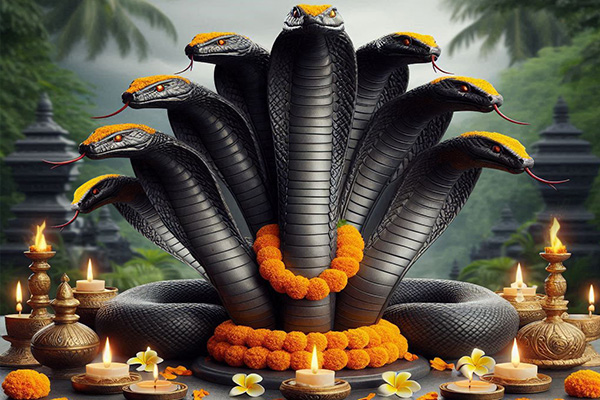
Nagula Chavithi is observed on the Chaturthi (fourth day) after Amavasya (new moon) during the Hindu month of ‘Karthika’. The festivals of Nag Panchami and Nagasaki are observed after Naga Chaturthi. On the auspicious occasion of Nagula Chavithi, Nag Devatas (Snake Gods) are worshipped. It is mainly observed by married women who pray for the well-being of their children. On this day, women observe a ‘Vrat’ (fast) and offer prayers to propitiate the Snake God (Naga Puja).
During Nagula Chavithi, Ashtanga (eight hooded cobras) are worshiped and appeased. Milk, dry fruits and sometimes even eggs are offered to ‘Sarpa Devata’ at the ‘Valmeeka’ or ‘Putta’ (snake pits), to appease the Snake God. Nagula Chavithi is celebrated in a big way, in many parts of Andhra Pradesh and Karnataka.
When Is Nagula Chavithi Celebrated In 2026? Date, Time & Tithi
Nagula Chavithi is observed on Chaturthi tithi, the fourth day after Amavasya on Shukla Paksha in Kartik month, or October/November in the Gregorian calendar.
Nagula Chavithi on
Friday, November 13, 2026
Nagula Chavithi Puja Muhurat - 11:15 AM to 01:30 PM
Duration - 02 Hours 15 Mins
Chavithi Tithi Begins - 06:09 PM on Nov 12, 2026
Chavithi Tithi Ends - 08:42 PM on Nov 13, 2026
Nagula Chavithi Story (Katha)
.jpg)
As mentioned in the Puranas, during the Samudra Manthan (churning of the ocean of milk), a deadly poison emerged from the ocean. This poison was called halahala. To save all the beings of the three worlds, the Bhagawan had to consume this poison. Apart from Bhagawan Shiva, a few snakes present in the waters also consumed the poison. Vasuki was one of these snakes who consumed halala as he was tied to the mountain Mandara as a rope used for churning. Even after consuming this deadly poison, Vasuki did not complain. Looking at this, Bhagawan Shiva was impressed and thus decided to wear Vasuki (the king of sarpas) around his neck.
There is another legend according to which Vasuki surrendered to Bhagawan Shiva. So, as per this legend, during the churning of the ocean of milk, Vasuki, son of Sage Kashyapa and Kadru, consumed the deadliest poison that emerged from the ocean. Due to the excessive churning process, Vasuki’s body was injured all over, and he was distressed. He surrendered to Bhagawan Shiva and fell at His feet. Vasuki said the following:
'O Bhagawan! O the leader of gods, the intense churning of the Milk Ocean strained my body, leaving it hot and injured. I became intolerant, lost all my Yogic strengths, and emitted the venom I had preserved for millions of years. I transgressed the self-control of the entire Yoga Naga Kula clan. Why did this happen, my Bhagawan? Please enlighten me.' On which Bhagawan Shiva smiled with love and compassion and said, ‘When you were chosen from the rest as a rope in the churning, you were unaware of ego taking over you, making you think, “They have chosen me. I must be special and great”. However, you have already been punished by bruises all over your body. Do not fear. You will be called once again by the gods and the demons to churn the ocean until Amrita comes out. The fragrance of amrita will energize you and restore your yogic strengths’.
As said by the Supreme Bhagawan Shiva, the serpent king Vasuki received all his strength and powers after the Amrita (Elixir) was churned out, and from that moment onwards, he became the most ardent devotee of Bhagawan Shiva and was humbled when Bhagawan Shiva placed him around His neck.
The Legend of the Asuras

According to yet another legend, after Bhagawan Kartikeya killed Tarakasura, who was an Asura king, then his sons Tarakaksha, Vidyunmali, and Kamalaksha were flaming in anger and wanted to teach a lesson to all the devas. These asuras undertook severe penances to appease Bhagawan Brahma. Impressed by their severe penance, Bhagawan Brahma told them that they could ask for a boon. The demons (asuras) requested Bhagawan Brahma to make them immortal. Bhagawan Brahma replied by saying that nothing can be immortal. The three asuras, Tarakaksha, Vidyunmali, and Kamalaksha, then thought for a while and asked Bhagawan Brahma to bless them with unassailable fortresses that would last forever. Bhagawan Brahma once again said that nothing can last forever. Hence, the three Asura brothers came up with a cruel and witty scheme. They requested Bhagawan Brahma to grant a boon according to which the destruction of the fortresses could be done only by a single arrow that would penetrate all three cities at the same time, which was practically impossible. Bhagawan Brahma granted them their desired wish.
Mayasura, the great asura and an ardent devotee of Bhagawan Shiva, was a great architect. He built the three cities known as ‘Tripura’. These three cities were mobile and constantly moved in various directions. The three cities were located on earth, in the sky, and in heaven, respectively. The city that was constructed on Earth had walls of iron; the city constructed in the sky was built with walls of silver, located in the sky; and the third city that was constructed in heaven has walls made of gold. After the cities were constructed, the three asuras would attack the deva loka after a few intervals and cause huge destruction.
The Devas were worn down and fled to Bhagawan Brahma for shelter and assistance. Only Bhagawan Shiva, according to Bhagawan Brahma, could help them. When the devas learned of this, they all went to Bhagawan Shiva for assistance. Bhagawan Shiva prepared himself by making a bow, an arrow, and a powerful chariot. Bhagawan Shiva waited patiently for that period, knowing that the three cities were mobile and would never come in a straight line except for a specific period, and when the time came, he aimed his bow and arrow at the three converged cities and hit the arrow at the core of the cities. All three cities soon began to crumble. Vasuki was the bowstring's name. As a result, Vasuki served Bhagawan Shiva whenever he was needed. Vasuki is said to have always been eager to assist his master, Bhagawan Shiva.
How to perform Nagula Chavithi pooja at home?

If you regularly dream of snakes, it is advised that you perform Nag puja by invoking the ancestors, worshiping Bhagawan Shiva, Nag Devta, or Kul Devta.
Following are the steps for Naag Puja Vidhi:
- Clean the puja room with Gangajal or water.
- Spread a clean cloth on a Chaupayi.
- Place the idol or an image of the Snake God.
- Keep an oil lamp on the right side of the idol.
- Sprinkle water and milk on the idol.
- Apply turmeric, sandalwood paste, vermilion and Akshat.
- Sprinkle flowers over the idol.
Nagula Chavithi Food
On Nagula Chavithi, devotees offer simple Satvik foods like milk, fruits, rice dishes, and sweets to honor the serpent gods, and these offerings are later shared as prasad.

What to Offer on Nagula Chavithi:
- Milk: Milk is the primary offering made to snake gods, particularly to Naga Devata. Devotees pour milk into snake pits (puttalu) or at temples dedicated to Nagas, believing it will appease the serpent gods.
- Turmeric and Kumkum: Turmeric powder (haldi) and vermillion (kumkum) are offered to snake idols or snake pits. They are also used to draw snake motifs on the ground as part of the ritual.
- Flowers: Devotees offer fresh flowers, especially jasmine and marigold, to the snake gods. These are placed on the snake idols or around the snake pits.
- Fruits: Fresh fruits, particularly bananas, are commonly offered during the puja.
- Eggs: In some traditions, raw eggs are offered at snake pits as part of the rituals to appease Naga Devata.
- Coconuts: Breaking a coconut is considered auspicious, and pieces are offered at the snake pit or temple.
- Incense and Camphor: Lighting incense sticks and camphor is a part of the puja, believed to purify the surroundings and please the snake gods.

What to Eat on Nagula Chavithi:
- Fasting: Many devotees, especially women, observe a fast on Nagula Chavithi. They either fast completely or eat only fruits and milk.
- Satvik Food: After the puja, devotees generally consume simple satvik (pure vegetarian) food. This usually includes items without onion, garlic, and tamarind.
- Rice-based Dishes: In some traditions, dishes made from rice, such as Pulihora (tamarind rice), are prepared and consumed after the puja.
- Payasam: A sweet dish, such as payasam or kheer (a milk-based rice pudding), is often made and eaten as part of the festive meal.
- Fruits: Fresh fruits are commonly eaten during the day, especially if a partial fast is observed.
- Coconut and Jaggery-based Sweets: Sweets made from coconut and jaggery are also consumed, symbolizing the sweetness of the offerings.
Significance of Snakes as per Vedic Astrology

Snakes occupy an exalted position in astrology since planets Ketu and Rahu represent a snake. In western astrology, the astrological symbols for both are depicted in the form of serpents, which are known as the North and South Nodes of the Moon.
If a person or his ancestors have killed a snake during his or her lifetime, he or she will have Kaalsarp Yog in the kundli in the next birth. Kaalsarp Yog exists when all seven planets are placed between Ketu and Rahu. Individuals with Kaal Sarp Yog in their horoscope need to take rebirth to fulfil their unfulfilled desires.
It is believed that killing a snake disturbs the subtle flow of pran within your body. A person suffers from anxiety, fear, insecurity, and fear of death. It results in business losses, progeny issues, relationship problems, etc. Since snakes are a symbol of fertility, Naag puja serves as a cure for Sarpa Dosha in those who experience delays in getting married and having children.
The Planet Rahu
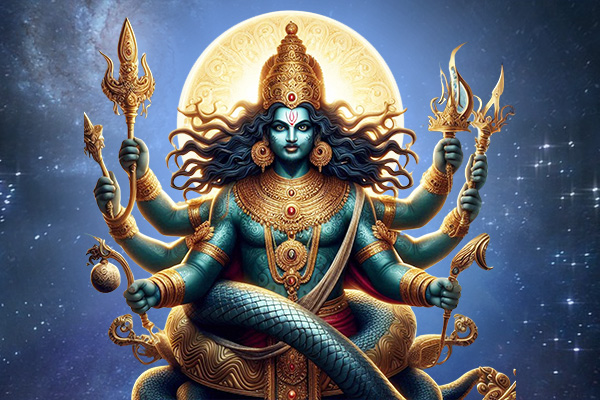
In astrology, a snake with its head raised indicates that the kundalini has awakened and attained the goal; this is how the planet Rahu or the Moon's north node is depicted. Therefore, Rahu holds special significance in relation to the symbolism of snakes, and if positioned unfavorably in the birth chart, its positive attributes can be harnessed during Nagula Chavithi by performing Naga Puja.
Legends of Rahu

Rahu, the planet of profound mysteries, is associated with an interesting mythological story. The legend dates to Samudra Manthan during the distribution of Amrit, the nectar of immortality. Bhagawan Vishnu emerged as the divine physician. Dhanvantari is also worshipped on Dhanteras for good health, with a pot of elixir in his hand.
Looking at the tense situation between the Devas and Asuras, it was decided that the Amrit would be distributed. Bhagawan Vishnu hoodwinked his identity in the form of seductress Mohini and commenced the distribution of the nectar of immortality. The Asuras were distracted by the movement and did not notice Mohini replacing the nectar with another liquid. This was noticed by a demon called Svarbhanu, who slipped in between the sun and moon to drink a few drops of nectar.
When Bhagawan Vishnu noticed Svarbhanu drinking from the nectar, he quickly threw his Sudarshan Chakra towards him and cut his head off. Even though the head and body were separated, Svarbhanu was still alive. However, Bhagawan Brahma came to the rescue. He joined the immortal demon’s head to the body of a snake, which came to be known as Rahu.
Consequently, the body was joined to the head of the snake, which came to be known as Ketu. Svarbhanu took the form with grace, which pleased Bhagawan Brahma. The latter blessed him with a boon that Rahu and Ketu would have a respected place in the Hindu astrological tradition.
Positive effects of Rahu
If planet Rahu is placed in the 5th, 7th, 9th, and 10th house, it provides effective results.
If Rahu is placed in the 12th house, an individual has a higher chance of foreign settlement.
A strong Rahu can help an individual achieve great heights.
Rahu attracts name, fame, success and wealth.
Negative effects of Rahu
It negatively impacts a person's relationship with their partner.
Natives may also experience financial loss in their lives.
Individuals tend to face adverse outcomes in their careers and education.
Moreover, malefic Rahu can also make an individual prone to anxiety and fear.
Remedies for planet Rahu

- Wear dark blue clothes.
- Observe and break the fast on Saturday only after Sunset.
- Donate black or blue clothes along with food to the underprivileged.
- Chant Saraswati Vandana, Durga Chalisa and Gayatri mantra.
- Use Rahu yantra or wear 9 Mukhi Rudraksha beads.
Nagula Chavithi Associated Products & Services
Savar Naag Rudraksha
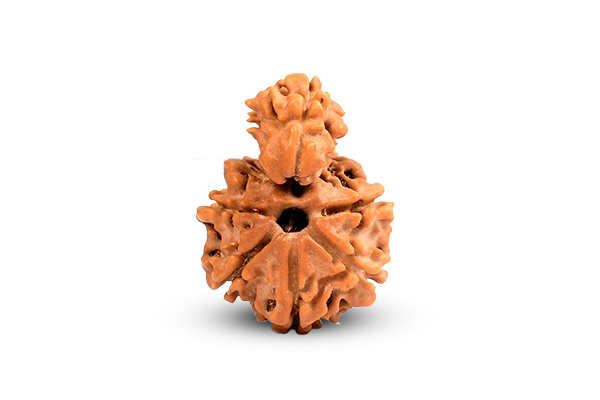
Savar Naag Nepalese Rudraksha is ruled by the Supreme Lord Shiva Himself and Shiva is also known as Pashupati Nath. Wearing this Rudraksha you can receive the blessing of the Lord of snakes on Nagula Chavithi.
Naag Yantra

Nagas are spiritual guardians and mystics who take the form of sacred serpents. This Nagula Chavithi buy Naag Yantra for personal and professional stability.
Ashtadhatu Naag Naagin Pair

Buy Ashtadhatu Naag Nagin set this Nagula Chavithi
Snakes hold great significance in Hinduism for several reasons. This intricately carved Nag Naagin Set made of Ashtadhatu is perfect for your spiritual space and will help you achieve wakefulness during meditation.
Naag Dosha Nivaran Puja

Naag Dosha, also called Sarp Dosha is caused in a kundli due to inauspicious placement of shadow planets Rahu and Ketu. Book Naag Dosha Nivaran Puja To pacify the malefic effect of the Naag Dosha. Naag Dosha Nivaran Puja is highly recommended in which the Serpent Lord is worshipped along with Lord Shiva.
Kaalsarp Shanti Puja at Trimbakeshwar temple
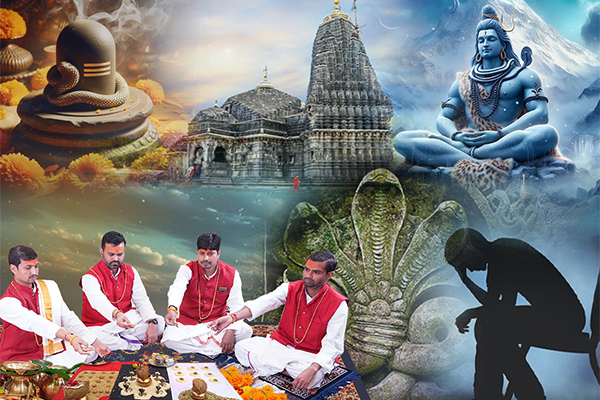
Book Kaalsarp Shanti Puja at Trimbakeshwar temple on Nagula Chavithi
The Kaal Sarp Puja Vidhi at Trimbakeshwar Temple is also performed to get rid of mental, emotional and physical stress. It helps bring back happiness in life and resolves problems caused by this dosha.
Rudra Centre Puja Services is the oldest & most trusted Online Puja Services provider in the world. Over 20 years we have organized Yagnas, Pujas, Homas & Kathas like Ati Rudra Mahayajna, Sahasra Chandi Homa, Akhand Ramayan Paath, Shiva Maha Puran Katha, 4 Prahar Mahashivratri Mahapuja with teams of 100’s of experienced curated priests for the benefit of Mankind and our global clientele.
Narmada Shivling

Worshipping Narmada Shivlings bestows Bhagwan Shiva’s blessings, good health, wealth, prosperity, protection & success in all areas of life. Receive the blessings of Shiva this Nagula Chavithi.


-in-Astrology.jpg)






.jpg)


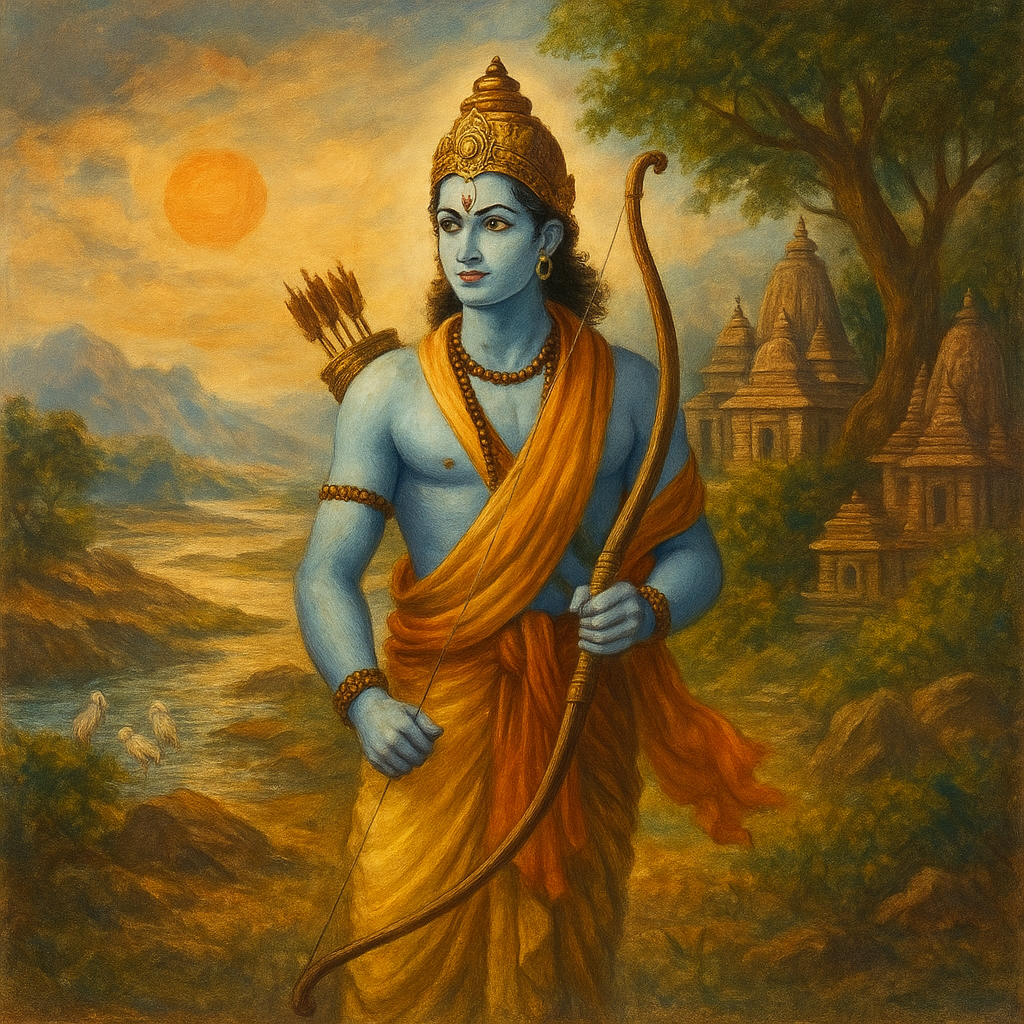
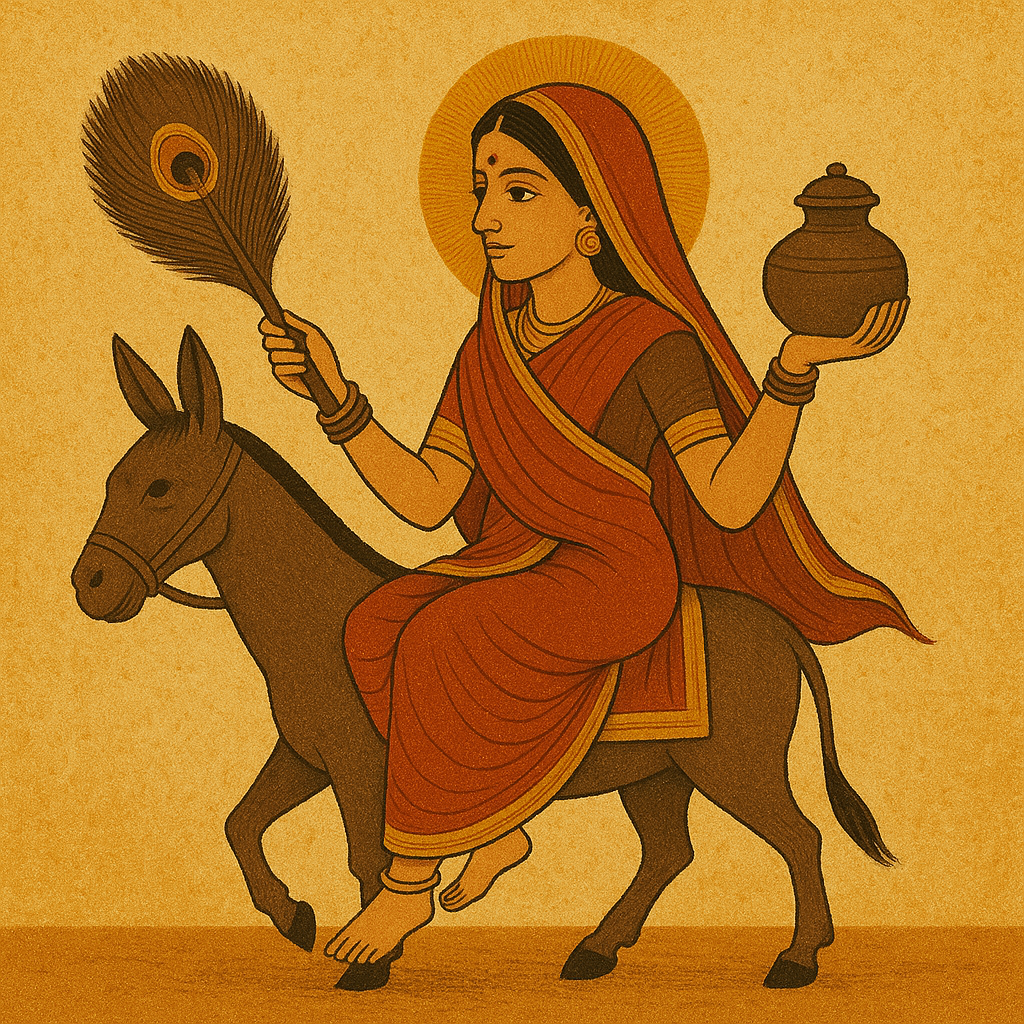
Comments 0
Leave your thought here